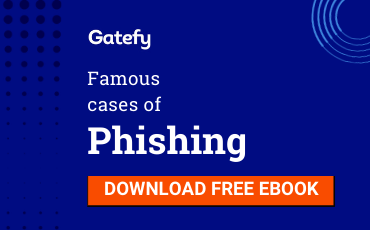How anti-spam protects your organization
- Updated at March 18, 2021
- By Gatefy
- Blog, Tips & Advices

Thanks, anti-spam. What could have happened to us without anti-spam software? Can you imagine that? We would probably spend more time deleting emails than responding them, and would fall for more scams than ever, since in general many spam messages contain malicious files and URLs, and are used for phishing attacks.
The big challenge when it comes to anti-spam protection is that spammers are constantly searching for new ways to spread their junk mail. The good news is that protection techniques also evolve, from artificial intelligence to rules-based analysis.
Table of Contents

How anti-spam works
The best way to deal with a large volume of unwanted emails is using filtering techniques and analysis. That’s, basically, how anti-spam software work. They use filters based on algorithms and heuristics methods to determine what is a spam. It’s important to point out that an anti-spam can be placed on inbound and outbound mail.
Presenting different types of spam filtering
Blacklist: it’s a list-based filter. This is a popular method in which the organization adds IPs and email addresses to block messages from specific senders.
Domain Name System-based Blackhole List (DNSBL) and Real-time Blackhole List (RBL): list-based methods in which third parties maintain updated lists of senders identified as spammers.
URL Blacklist: it works as DNSBL and RBL but for malicious URLs.
Whitelist: it works as the opposite of Blacklist, allowing your organization to specify good senders.
Greylist: it temporarily rejects an email from an unidentified sender, based on the fact that, in general, spammers don’t try to send their junk mail twice.
Word Filter: it’s a content-based filter. Basically, your organization defines specific words and the software blocks any email that contains them.
Heuristic: it uses a combination of algorithms and resources to identify spams based on scores. In practice, it analyzes different parts of an email, such as headers and content. If the email receives a determined or higher score, it’s blocked.
Bayesian: it’s a type of heuristic filtering based on statistics and occurrence. This is where machine learning comes into email protection. The software can learn from your users and block spams.




